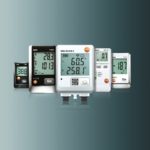Any form of toxic leak from an appliance can have have major ramifications for a business, its employees and its customers.
A recent example from the US has illustrated how dangerous leaks can be and the importance of workplaces having proper preventative measures in place.
According to CBS4, at least 24 people were were exposed to poisonous gas during an apparent refrigerant leak at a Denver, Colorado restaurant. Both employees and customers reported the problem at Oskar Blues Home Made Liquids and Solids. They immediately felt sick and called emergency services.
On arrival, emergency services quickly set up a decontamination tent and those affected were treated by medical staff. At least nine people were taken to a nearby hospital with respiratory problems.
Authorities are still investigating what caused the leak, but first indications are that it could be a defective or problematic hot water heater.
A firefighter told The Denver Post the heater may have attempted to light itself, but didn’t work and then sent fumes through the restaurant from the kitchen area.
“We think the exhaust, which contains products of incomplete combustion, were being recirculated through a nearby evaporative cooler right above the fryer area where the employees had been working,” fire services chief Jerrod Vanlandingham said.
Restaurant owner Anita Gray explained to CBS4 that the whole situation was “frightening” and “concerning”. She said the restaurant would be closed until further notice as safety was their first concern.
Refrigerant leak solutions
As restaurant equipment could have been used for a long period of time and subject to continued operation, it could be a good idea for those in this industry to invest in safe guards.
For businesses investigating their options, Testo has many solutions. The 316-4 Refrigeration Leak Detector Set 1 is a reliable detector for all common refrigerants. This monitoring instrument can prevent occurrences such as in Denver happening by alerting you as soon as the level exceeds safe limits.
As well as this one, the testo 316-3 Refrigerant Leak Detector is capable of finding the smallest gas leaks due to its highly sensitive sensor. This product meets the F-gas regulations as well as the standards SAE J1627 and EN14624.
Preventative measures required
For businesses using refrigerant systems, the best form of defence against leaks is active maintenance of equipment and having the right tools in place to deal with the situation. In a recent Hawaiian example, a grocery store had the correct evacuation plans and measures in place.
Late last month, a large Freon leak occurred at the Foodland grocery store at the Waipio Shopping Centre. The store managers discovered an issue and got everyone out of the building.
When emergency services arrived, they confirmed it was a Freon gas leak. This gas is usually colourless and sometimes presents itself with a odour. However, it can appear as white mist in large leakages.
Thanks to the ventilation system, the majority of the gas was contained behind the store and after an air out, was re-opened.
Acting Fire Battalion Chief Paul Fukuda explained to Hawaii News Now that the refrigerant system had completely shut down, emitting a dangerous amount of gas.
“Capacity of this system is 800 pounds, and all 800 pounds evacuated the system,” he said.
“Refrigerant of this amount is considered to be a large spill, and it can be an asphyxiant. It displaces oxygen, so it can be dangerous in large quantities.”
Thanks to the quick work of grocery staff, nobody needed medical treatment – outstanding given the considerable amount of leakage.
Detection options available
In loud environments such as a grocery store, it is imperative to get the right location of the leakage. The 316-4 Refrigeration Leak Detector Set 2 is a great option as it is fast, reliable and features an earplug socket.









 Reduce cooking oil costs while ensuring quality
Reduce cooking oil costs while ensuring quality Expert knowledge on CO2 monitoring
Expert knowledge on CO2 monitoring Refrigeration knowledge - in 3 modules
Refrigeration knowledge - in 3 modules



